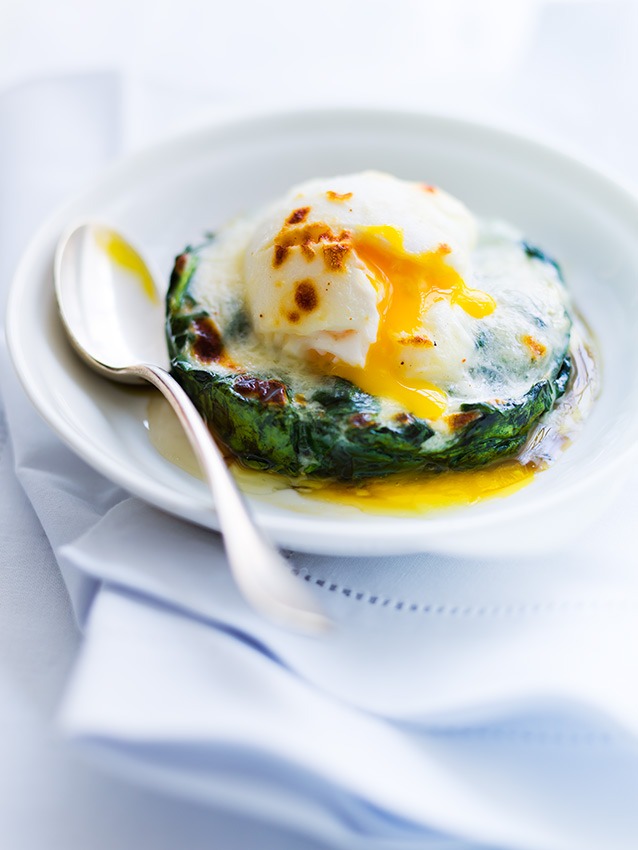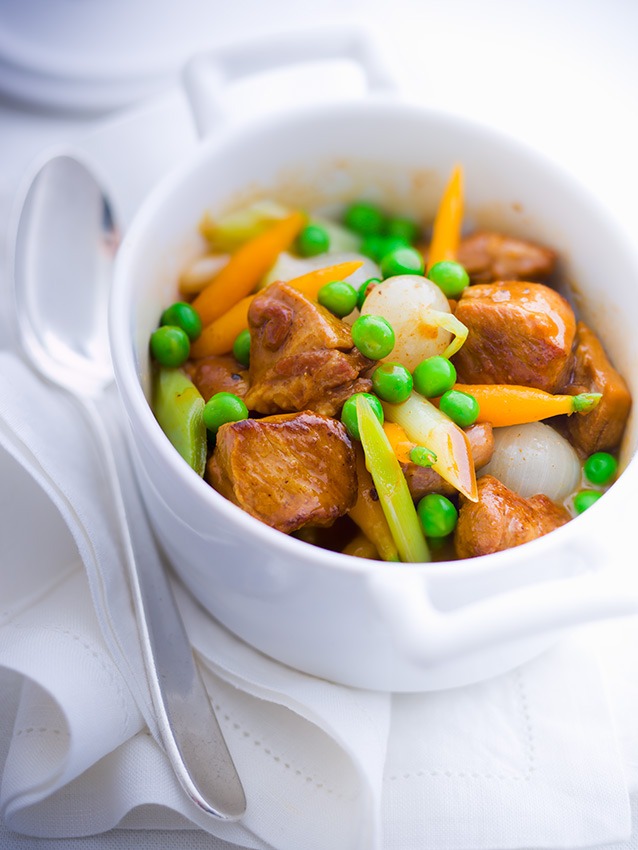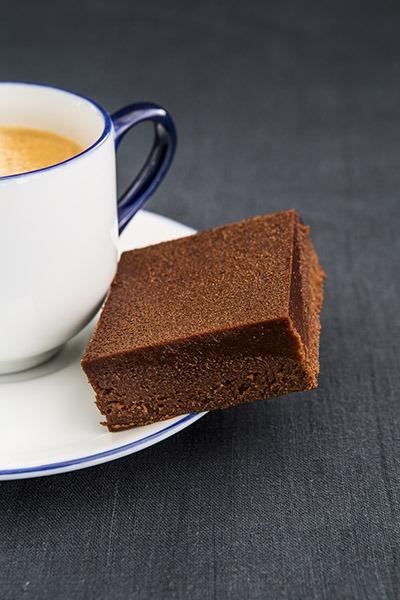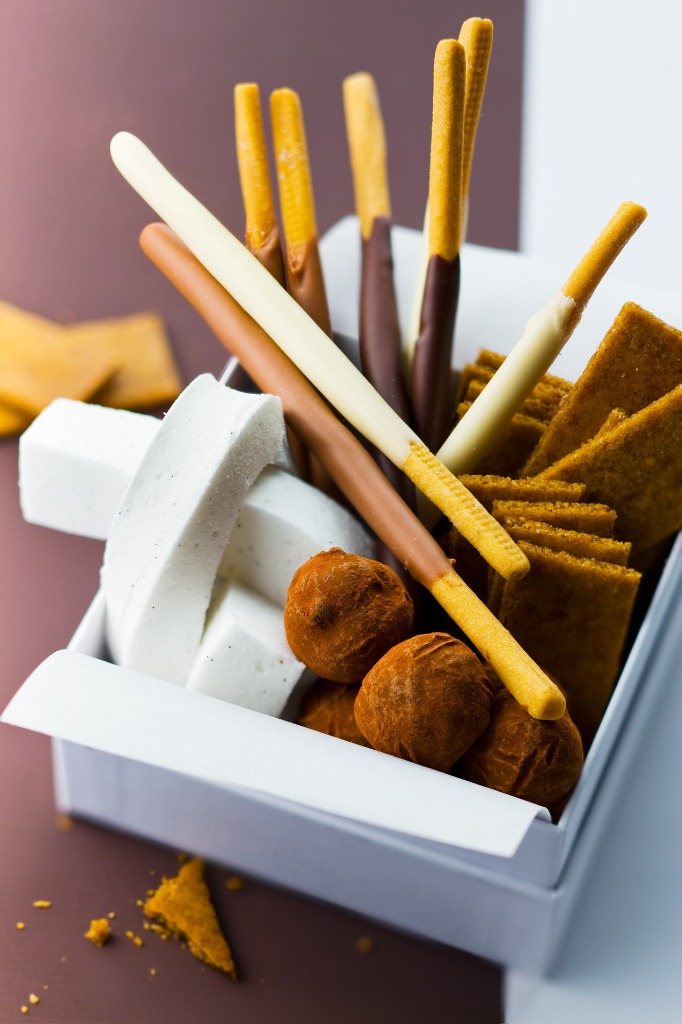Week’s menu
April 6 – April 12
In this confinement, we are all put to the test: caregivers, patients, families … One of the only positive points is that we rediscover our values of care for the other, solidarity, common good and love. And what better proof of love than to cook for those we love. This transmission value has been driving me for years. First with our son, Nathan, whose bursts of gluttony at the table fill us with happiness, then with all those I love. Every day they inspire me to create and imagine new tasting and associations. Then, I wanted to extend this creativity in concentric circles, from the Scook cooking school in Valence, then in the edition of creative recipes, easy and accessible in the books of the same name. So that you can, at home, in these exceptional times, find these simple recipes for cooking at home with the essentials techniques to their success. I hope you enjoy these cooking tips dedicated to such a beautiful cause: the pleasure of making people happy.
With these recipes, my wish is to enhance eating well, in our daily lives, as we can, with what we have at home of course. These recipes are not imposed, they only offer one more perspective when cooking. Here are the recipes to discover this week: Look at the recipes :
the eggs
4 extra-fresh eggs
1 dash of vinegar
Béchamel sauce
40 cl whole milk
40 g semi-salted butter
40 g flour
Grated nutmeg
Fine salt
The filling
400 g fresh spinach
20 g semi-salted butter
1 dash of olive oil
1 clove of garlic
Fine salt
40 g grated Beaufort cheese
Equipment
Fine sieve,
skimmer,
individual ramekins
1️⃣ The eggs
Cook the “soft” eggs: plunge them for 6 minutes in boiling water with vinegar. at the end of cooking, drain the eggs with a skimmer and plunge them into a bowl of ice water, then remove the shell.
2️⃣ Béchamel sauce
Bring the milk to the boil in a saucepan. In another saucepan, melt the butter over low heat, without coloring, then add the sifted flour with a fine sieve. cook the butter-flour mixture for 2 min to cook the flour well. Pour in the very hot milk, little by little, taking care to boil the sauce briefly with each addition of milk (to avoid lumps). Salt lightly, then add a little grated nutmeg. Take it off the fire.
3️⃣ The filling
Stalk and wash the spinach. Drain them. In a frying pan, heat the butter and oil. add the clove of garlic peeled and just crushed with the dish of a knife, then the spinach. Salt and cook for 3 or 4 minutes. Remove from heat, allow to cool and set aside. remove the garlic clove.
4️⃣ Finishing and presentation
Preheat the oven to the broil position. in ramekins, divide the cooked spinach. Place a shelled soft-boiled egg on top, then cover with béchamel sauce using a tablespoon. finish by sprinkling with grated Beaufort cheese and put in the oven. Let it gratinate for 5 minutes. Remove from the oven and serve hot.
💡Council
Here, the spinach has “fallen” out of the pan, i.e. cooked without water. This way, they keep all their flavour.

📷 Mickael Roulier
500 g lamb shoulder
1 carrot
1 onion
1 stalk of celery
1 piece of leek
1 tomato
1 branch of tarragon
5 cl white wine
75 cl chicken stock
1 dash of peanut oil
20 g butter
Fine salt
Peppercorns
Spring vegetables
8 baby carrots
8 mini leeks
8 spring onions (or spring onions)
100 g shelled peas
20 g butter
The finish
1 branch of tarragon
Equipment
Pressure cooker,
strainer,
skimmer,
hand whip
Prepare the “aromatic garnish”: peel the carrot and onion; wash the celery, leek, tomato and tarragon. Cut it into small dice.
In a pressure cooker, sear the pieces of lamb over high heat with the peanut oil and butter. when they are well coloured, add the “aromatic garnish” and a few peppercorns. Tilt the pressure cooker to empty and remove grease. Pour the white wine and reduce to 3/4. add the chicken broth. turn the pressure cooker off and set the pressure cooker to “vegetable” or “1” mode.
Leave to cook for 25 minutes, starting from the pressurization of the valve.
Remove from the fire and allow the pressure to release slowly. Above all, do not remove
the valve too quickly: the pressure shock damages the fibres in the food. remove the meat with a skimmer and set aside.
2️⃣ Vegetables
Prepare the vegetables: peel the carrots, wash the leeks and onions. Cook them separately in a pot of boiling salted water for about 5 minutes, then cool them in iced water to preserve the colours. Drain them.
A few minutes before eating, assemble the vegetables in a frying pan. Add some of the cooking juices from the meat and the butter and bring to the boil. Add a little salt and leave to cook for 3 or 4 minutes so that the juice thickens a little and coats the skin.
the vegetables.
3️⃣ The sauce
Filter the navarin cooking juices through a fine strainer, bring it to the boil in a saucepan and let it reduce slightly to concentrate. Adjust the seasoning by adding a little salt. If the sauce is not thick enough, reduce it to the desired consistency.
4️⃣ The presentation
Place the cooked meat and vegetables in the sauce. Heat a little, stir gently to distribute the ingredients evenly (especially without boiling), sprinkle with finely chopped tarragon and serve the navarin immediately.

📷 Mickael Roulier
Chocolate fondant
without eggs
A beautiful meeting around this recipe with Sibylle AUDOLLENT, author of the blog “Z’oeufs peux pas” and the book of the same name, who asked me in 2012 to create a recipe for her, without eggs, because her daughters are allergic to them and she shares her recipes on a blog to help other allergic people. A beautiful initiative to which I had great pleasure to respond around a gourmet dessert for young and old, the chocolate fondant.
150 g whole milk
200 g of dark chocolate Guanaja 70% (This is couverture chocolate to be bought from a chocolatier or a delicatessen)
75 g flour type 55
150 g soft butter
1️⃣ Preheat the oven to 180°C
Melt the butter with the chocolate, then heat the milk and pour it over the 1st mixture (butter-chocolate) – whisk the 2 mixtures.
Then add the sugar, starch and flour little by little and mix well.
2️⃣ Put in the oven for 5 to 8 min (depending on the oven), prick the cake with the tip of a knife, it should come out with some preparation.
3️⃣ Let the cake cool down and then put it in the refrigerator for at least 4 hours.

Vanilla Marshmallow
(to be weighed, count at least 3 small eggs)
400 g sugar
7.5 cl of water
2 vanilla beans
20 g gelatine leaves
Icing Sugar
Maïzena
Equipment
Mixer
1️⃣ Soak the gelatine in a bowl of cold water for 5 minutes. Pour the water and sugar into a saucepan, bring to the boil and cook for 5 to 10 minutes.
over a fairly high heat: the temperature of the syrup should reach 125°C, if you have a thermometer. Split the vanilla seeds in half and scrape them to remove the small black and fragrant seeds they contain. In a bowl, whisk the egg whites with the vanilla seeds. Drain the gelatine, then add it to the cooked sugar. Pour over the snow whites, then continue beating until cool.
2️⃣ Pour the preparation into a lightly greased mould or circle. Leave in the cold for at least 2 hours.
3️⃣ Cut out thick strips and roll them in a mixture of icing sugar and cornflour (in equal amounts) to prevent them from sticking together.

📷 Mickael Roulier
200 g liquid cream
250 g dark chocolate
50 g butter
100 g cocoa powder
180 g flour
65 g icing sugar
5 g baking powder
75 g butter
60 g egg yolks
(about 3 yellows)
300 g chocolate
Equipment
Socket pocket
Baking paper
1️⃣ In a bowl, break the chocolate into pieces. In a saucepan, boil the liquid cream, then pour it over the dark chocolate broken into pieces.
Mix well, then add the butter (softened at room temperature). Allow to cool so that the preparation takes on a thick consistency.
2️⃣ With a pastry bag, form small balls on a plate. Put them in the refrigerator for 1 hour.
3️⃣ Roll the balls in your hands so that they are well rounded, then coat them with cocoa powder. Keep in a cool place before serving.
Chocolatesticks
2️⃣ Preheat the oven to 150 °C (th. 5). Spread the dough in a layer about 3 mm thick, then cut 3 mm wide sticks. Roll them between the palms of your hands to form rods. Place the dough sticks on a baking sheet covered with baking paper. Bake them in the oven for 15 minutes.
3️⃣ Soak the baked sticks in not too hot (about 30°C) melted chocolate, place them on a plate covered with baking paper and let them cool in the refrigerator for 2 hours to solidify the chocolate.

📷 Mickael Roulier

